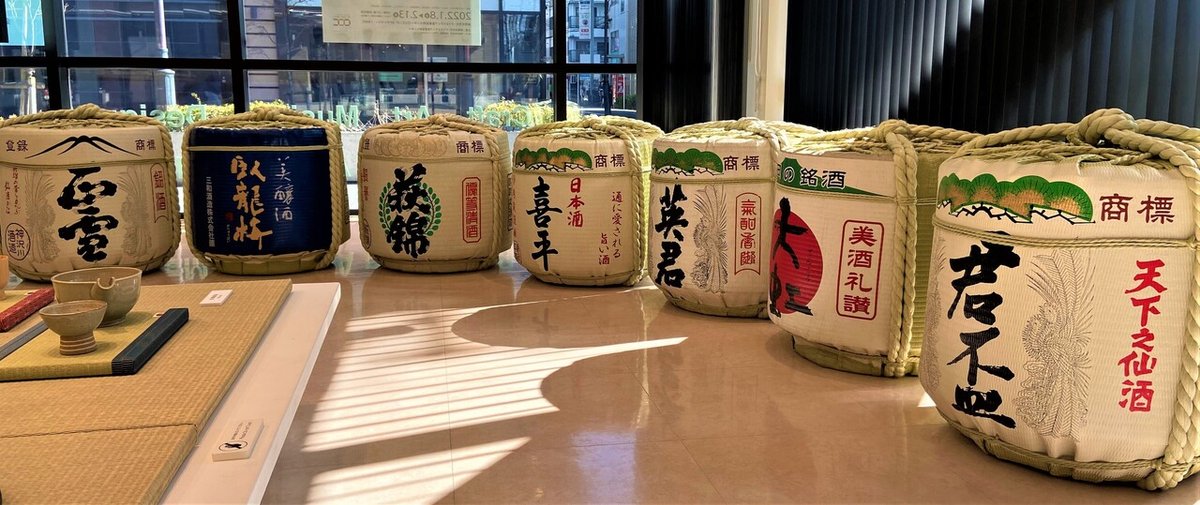
【~連載~静岡の歴史を学ぼう111】Sake in Shizuoka prefecture Part2 静岡県の酒 パート2
※ この記事は「静岡移住計画Facebook」に掲載しております。
新年度、新しい人生のステージに進む皆様、おめでとうございます。静岡県産の日本酒で一杯、と言う方もいらっしゃるでしょう。
静岡県の日本酒の生産量は国内のわずか1%にすぎません。しかしプロ、そして通から「吟醸酒と言えば静岡」と言われるまでになりました。それを語るのに、河村伝兵衛さんの名前を忘れてはなりません。
Sake in Shizuoka prefecture Part2
静岡県の酒 パート2
Shizuoka Kobo was developed by Kawamura Denbee, an expert from the Industrial Research Institute of Shizuoka Prefecture.
静岡酵母は静岡工業試験場の専門官、河村伝兵衛によって、開発されました。
Kawamura Denbee paved the way for the sake industry in Shizuoka prefecture by developing unique kobo variants.
河村伝兵衛は独自の酵母の株(種類)を開発することによって静岡県の日本酒産業において道を拓きました。
Kawamura developed ‘Shizuoka Kobo’, which brings out the taste of Shizuoka’s water.
河村が開発した「静岡酵母」、それは静岡の水の味の良さを引き出しました。

Water in Shizuoka prefecture tastes soft and smooth.
静岡県の水は柔らかくなめらかです。
Such soft water ferments sake slowly, which makes the sake tastes gentle and mellow.
そのように柔らかい水であると発酵がゆっくりと進みます。そして日本酒の味が優しく、まろやかになります。

静岡市の航空写真 提供:静岡市
Thanks to Shizuoka Kobo, Shizuoka prefecture became the home of ginjo-shu, a type of sake made from high-polished rice using a special technique.
静岡酵母のおかげで、静岡県は吟醸酒(特別な技術を用いて、高度に精米したコメから作る日本酒)の本場となりました。
To make ginjo-shu, rice must be at least 40% polished to get rich aroma and taste.
吟醸酒を作るには、豊かな香りと味わいが感じられるよう、少なくとも40パーセント(削って)精米しないといけません。

Kawamura Dembee, whom Shizuoka sake industry is proud of, always emphasized that the washing process is the most important in the making of high-quality sake because water is important not only as an ingredient but as a part of the process of sake making.
静岡の日本酒業界が誇る河村伝兵衛は常にこのように強調していました。「良い酒を作るためには洗いに始まり、洗いに終わる」なぜなら水は材料としてだけではなく、酒作りの過程で役割としても重要だからだと言います。

What is "the washing process" in his statement?
彼の言葉にある「洗い」とは何なのでしょうか?
It has two parts: First is washing rice.
二つの過程があります。まずは米を洗うことです。
In this process, unnecessary particles on the surface are removed.
この過程では、表面にある不要な粒子は取り除かれます。
About 1 to 2% of rice is further polished by washing.
洗うことで約1~2%がさらに精米されます。
It means washing works as a second polishing.
つまり、洗いの作業は第二の精米の役割を果たしています。
In addition, polished rice absorbs water. Hence, high-quality water is a must.
さらに、精米されたコメは水を吸収します。したがって高品質の水はなくてはならないものです。
The second part is washing the sake bags, which are used to press "moromi" (fermentation mash containing rice and koji).
2番目の部分は酒袋を洗うことです。酒袋とはもろみ(米と麹が発酵してどろどろの状態になったもの)を押しつぶすために使われます。
Mr. Kawamura emphasized that the filtering bags or sake bags must be clean because Ginjo-shu is very delicate.
河村氏は、吟醸酒はとても繊細であるから酒袋を絶対にきれいにしておかねばならない、と強く言っていました。
If some odor is left on the bags, the quality of taste and aroma of sake would decline.
もしにおいが酒袋に残っていたら、日本酒の味、香り、いずれも悪くなってしまいます。
Recently, sake bags are being replaced by machine press.
近年では酒袋は圧縮機にとって代わっています。
However, Mr. Kawamura’s principle of using clean tools is still being practiced in the Shizuoka sake industry.
しかし、河村氏の教えである道具をきれいに保つことはずっと静岡の酒業界の中で守られています。
参考資料:南部郷土史大学だより第4号 特集 「静岡の地酒」2018年8月
静岡酒造組合ホームページ
「静岡県の吟醸酒造り」 河村伝兵衛 醸協(1988)第83巻第11号

静岡市七蔵元の酒樽 「静岡市七蔵元と酒器展」より

地元静岡市、鳥羽漆芸さんの「金剛石目塗」のグラスで
日本酒を頂くのはいかがでしょうか(「静岡市七蔵元と酒器展」より)

静岡市は安倍川の豊富な伏流水に恵まれていました。江戸時代は井戸を 掘って湧き水を使っていました。現在も許可を得たところでこうして湧き水を得ることができます。(静岡市葵区大岩 「竹千代の水」)
